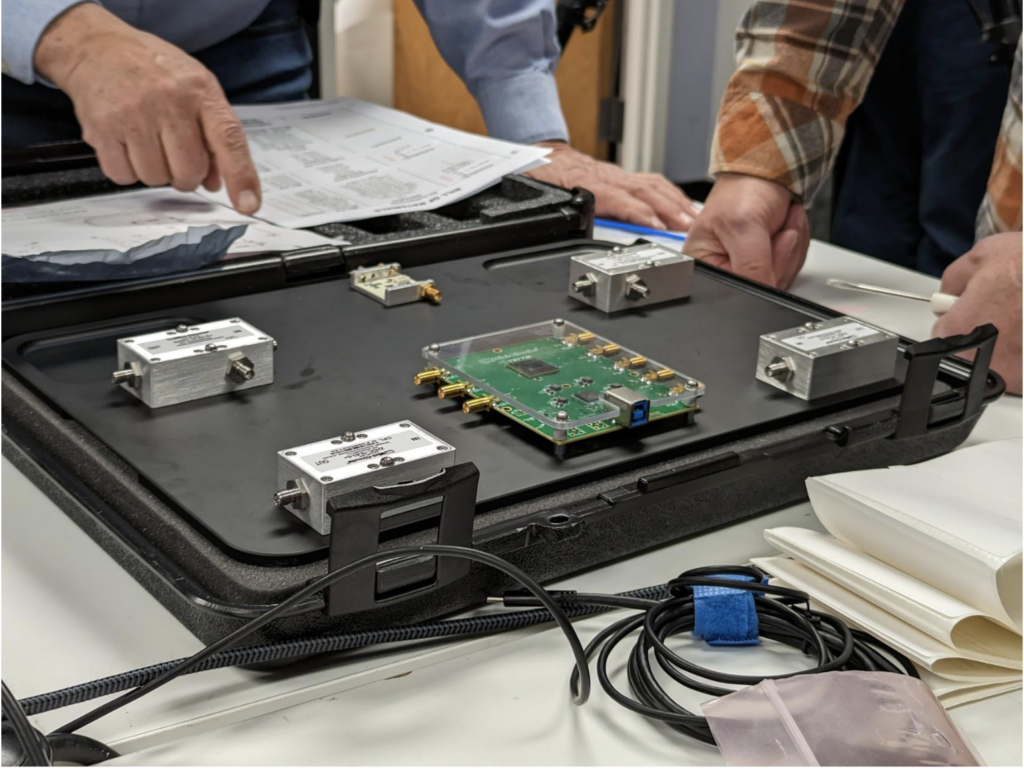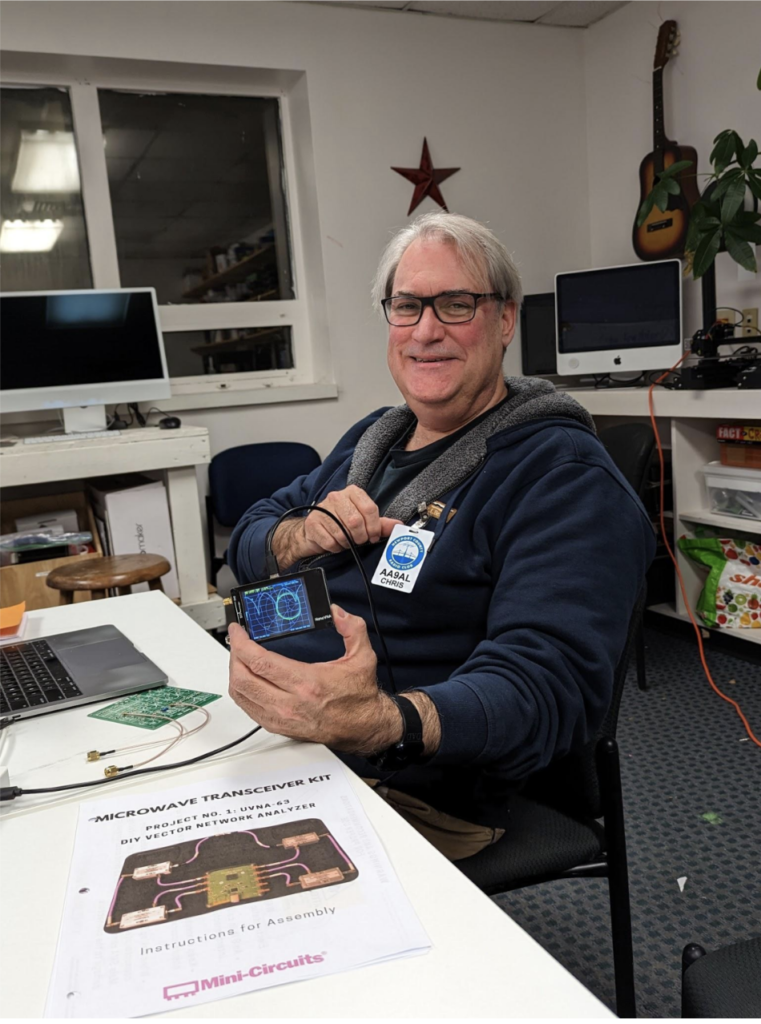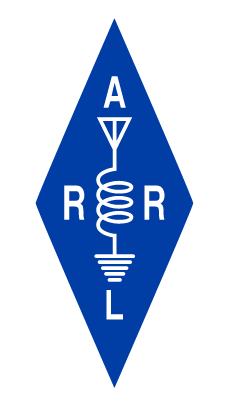Contributed by Nancy Austin, KC1NEK, Newport County Radio Club:

As a curious 13-year old, Chris Lirakis joined the ARRL and now a half-century later is a Quantum Two Systems Engineer for IBM and ham operator, Chris AA9AL. I had the chance to interview Dr. Lirakis recently when the Newport County (RI) Radio Club (NCRC) gathered at local maker space FabNewport. Our team goal that night was to build the 6-GHz Vector Network Analyzer (VNA) the NCRC was able to purchase because of a successful club grant award from the ARRL Foundation. NCRC project leads are Paul Fredette, K1YBE, and Rob White, KB1ZZU. As we waited to start, I was curious what had made Dr. Lirakis, a busy physicist, prioritize being here tonight? What did he feel was most important to convey to other people about why this new VNA really was a game changer? With no hesitation, he shared these perspectives:
“Everyone knows that an antenna has an SWR, but what does that really mean? Physically? Well, an antenna is just a tuned circuit, and a VNA is an unparalleled tool for predictive diagnostics. With the recent introduction of the affordable ($35-50) 1-GHz Nano-VNA in our lifetime, anyone can now easily experiment with various antenna parameters and with the help of visualization software instantly see how this one parameter change would impact the antenna’s performance. Indeed, a 2021 conference paper* on Post-Pandemic learning disruption called out the Nano-VNA for transforming how any student could now get comfortable understanding what a Nano-VNA could do, at their own learning pace. Low risk; high fun. And yes, you too can come to love Smith Charts.”

But the Nano-VNA will only get you so far in the microwave bands. Above 1 GHz, wavelengths are under one foot, and everything matters in the effort to control spurious emissions. Here is where the 6-GHz VNA from Mini-Circuits [UVNA-63] comes in to expand the learning opportunities opened up by the entry-level Nano-VNA. There remains the need for a high-quality reference VNA to calibrate against. But at what price-point? In Dr. Lirakis’s Quantum lab at IBM, there is a VNA costing a half-million dollars. The research lab at a nearby university has such a calibration VNA costing about $100,000. It is astonishing to see the democratization of affordable tech tools like this 6-GHz VNA drop from $10K just a few years ago to now, $3500. Suddenly, a radio club (and not only a research lab) can make this investment. Now, club members can get started with Nano-VNAs and have the calibration potential of the more expensive club resource to learn from and compare results with. It opens significant possibilities for 21st century hams to experiment learning antenna design.
As we turned to work on building the new 6-GHz VNA with Team NCRC, I asked Chris, AA9AL, if he had any final message he wanted me to convey. That was easy. Dr. Lirakis always tells anyone who asks: “Ham radio is a gateway to technology.” Still walking the talk after 50 years as an ARRL member.

recent 6-GHz VNA build night at FabNewport, Newport, RI
*Derickson, D., & Jin, X., & Bland, C. C. (2021, April), The NanoVNA Vector Network Analyzer: This New Open-Source Electronic Test and Measurement Device Will Change Both Remote and In-Person Educational Delivery of Circuits, Electronics, Radio Frequency and Communication Laboratory Course Delivery Paper presented at 2021 ASEE Pacific Southwest Conference – “Pushing Past Pandemic Pedagogy: Learning from Disruption”, Virtual. https://peer.asee.org/38253
